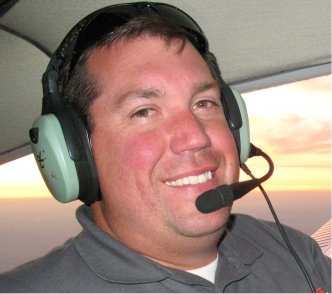Technique: Deep Dive
What a pilot needs to know about scuba diving and flying

Many people who love to fly also enjoy scuba diving—and vice versa. When not properly planned for, however, commingling of these activities can be dangerous—and even fatal.
Most pilots learn in initial pilot training that they shouldn’t fly right after scuba diving, but few learn more than that. Whether flying for recreation or taking customers to a destination where you may plan to go scuba diving, there is more you need to know to safely make the trip home. Specifically spelled out in the Aeronautical Information Manual and the Pilot’s Handbook of Aeronautical Knowledge, the aeromedical effects of scuba diving on pilots and passengers are a required item for testing, let alone safety.
AIM 8-1-2 (d), “Decompression sickness after scuba diving,” states that “a pilot or passenger who intends to fly after scuba diving should allow the body sufficient time to rid itself of excess nitrogen absorbed during diving. If not, decompression sickness due to evolved gas can occur during exposure to low altitude and create a serious in-flight emergency.” What does that really mean? How long a wait really is required?
Divers who go below the surface of the ocean experience an increase in pressure of about one atmosphere per 33 feet of descent. As the pressure increases, divers’ bodies absorb more nitrogen. If the pressure is reduced too quickly, the nitrogen comes out of solution and forms bubbles in the tissues and blood. Symptoms of decompression sickness, commonly called the bends, include skin rashes, irritable skin, breathing difficulty, joint and muscle pain, dizziness, vision limitations (even blindness), convulsions, or unconsciousness.
Guidance on how long to wait before flying varies. A DiveCompare blogger notes that “the recommendation set out by [the Professional Association of Diving Instructors] is: For single dives, a minimum preflight surface interval of at least 12 hours is recommended. For repetitive dives, or multiple days of diving, a minimum preflight surface interval of at least 18 hours is recommended. [Divers Alert Network] recommends 24 hours for repetitive dives, the U.S. Air Force recommends 24 hours after any dive, while the U.S. Navy tables recommend only two hours before flying to altitude.” The discrepancies between these agency recommendations and even the AIM highlight the complexity of the question of how long to wait to fly after scuba diving.
The AIM says a pilot should wait at least 12 hours prior to flying to altitudes up to 8,000 feet msl if a dive has not required a controlled ascent (nondecompression-stop diving) and at least 24 hours after diving in which a controlled ascent (decompression) is required. Any flight above 8,000 feet msl should be delayed until at least 24 hours has elapsed. The AIM says these recommendations are actual flight altitudes above mean sea level, not pressurized cabin altitudes—a critical point because of the concern for any potential loss of aircraft pressurization.
Even if you are not a diver, you may carry passengers who are. So what are the basics you should know?
A good practice is to have a “down day” prior to flight after any diving. Space any planned flights (even at lower altitudes) with a day between the last dive and the flight departure. But as noted, consider the mean sea level altitude at which flight will occur, not the 8,000-foot cabin pressure altitude. Many light aircraft will fly higher, and certainly most cabin-class business aircraft will fly higher than this altitude. Two days might be a better plan, especially if there was deep or repetitive diving.
Many divers now use computer- or tablet-based dive-planning software and underwater dive computers that go with them when they dive. These dive computers calculate a diver’s depth and, in many cases, oxygen usage; they provide detailed algorithmic-based computations that evaluate a diver’s activity. Modern dive computers will calculate a “time to fly” and recommend a wait time for a diver prior to a flight.
To be accurate, divers must use the same computer for all their dives, and on all the dives. Time-to-fly calculations are continuously cumulative based on diving times, depths, and numbers of dives. Whether you are the pilot who dove or the pilot who will be flying passengers who were diving, consult the computer prior to flight or after their last dives are completed so you are aware of what wait time is required based on the time-to-fly calculation.
There is much more you can learn about diving, effects of pressure, symptoms, and how different activities affect flight safety. Knowing that the recommended minimums may not be enough can help you determine if you need more information prior to a flight.
Jason Blair is a National Association of Flight Instructors master flight instructor and a designated pilot examiner.
The pressure at an underwater depth of 66 feet is four times the atmospheric pressure at 8,000 feet msl.



